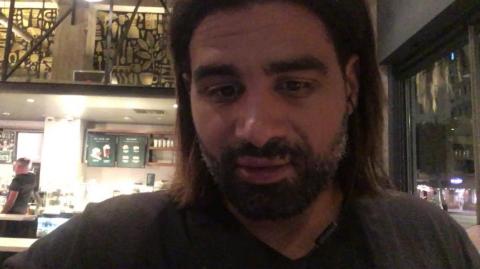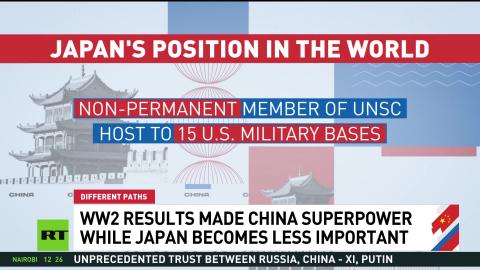How Jealousy Made Us
This is an article I generated in attempts to provide a foundation with regard to gauging the dynamic between the sexes as opposed to the more common notions thrown around based in proximal notions of supposed altruism.
The following article reviews literature regarding female mate guarding, male mate guarding, and female aversion to mate guarding in the context of Good Genes Sexual Selection Theory, Sperm Retention Hypothesis, and Mate Switching Hypothesis. Mate guarding by both sexes is preceded by jealousy and serves to protect relationships and the propagation of genes from mate poachers. While male mate guarding is heightened when partners are fertile and more attractive, females may mate guard valued partners due to mate value discrepancies. Mate guarding manifests differently amongst the sexes and may be indicative of mate switching being a primary function of humans.
Donations:
https://www.paypal.me/rpJarvis
Patreon:
https://www.patreon.com/RedPillMentor
Facebook:
https://www.facebook.com/RedPillTokyo
The "Where Have All the Good Men Gone?" Hypothesis - Red Pill Mentor
https://books2read.com/b/bovrW1
SHOW LESS
0



 RT
RT
 Raging Golden Eagle
Raging Golden Eagle
 Stefan Molyneux
Stefan Molyneux
 TheQuartering
TheQuartering





 Doggk
Doggk
 AgentofSocialMediaChaos
AgentofSocialMediaChaos

 Alpha Male Lifestyle
Alpha Male Lifestyle


 AwakenWithJP
AwakenWithJP
 Life_N_Times_of_Shane_T_Hanson
Life_N_Times_of_Shane_T_Hanson


 Supreme Decisions
Supreme Decisions


Log in to comment
YouTube:
https://www.youtube.com/channe....l/UCIAfGNBgF5DZN6P1R
References:
Abell, L., & Brewer, G. (2016). Machiavellianism, perceived quality of alternative mates,
and resistance to mate guarding. Personality and Individual Differences, 101,
236-239. https://doi.org/10.1016/j.paid.2016.06.013
Berry, D. S., & Kuczaj, S. A. (2000). Individual differences in evolutionary perspective:
The games people play. Behavioral and Brain Sciences, 23(4), 592-593.
https://doi.org/10.1017/s0140525x00283374
Briffault, R. (1931). The mothers: The matriarchal theory of social origins. New York,
NY: The Macmillan Company
Broude, G. J. (2000). Eating their cake and having it too: Or, how women maximize
reproductive success by simultaneous mating and dating. Behavioral and Brain
Sciences, 23(4), 595-595. https://doi.org/10.1017/s0140525x00313371
Buss, D. M. (1989). Sex differences in human mate preferences: Evolutionary
hypotheses tested in 37 cultures. Behavioral and Brain Sciences, 12, 1-49.
https://doi.org/10.1017/s0140525x00023992
Buss, D. M. (2002). Human mate guarding. Neuroendocrinology Letters Special Issue,
23(4), 23-29. Retrieved from https://labs.la.utexas.edu/bus....s/files/2015/10/buss
2002-human-mate-guarding.pdf
Buss, D. M. (2011). The dangerous passion: Why jealousy is as necessary as love and
sex. New York, NY: Free Press.
Buss, D. M., Goetz, C., Duntley, J. D., Asao, K., & Conroy-beam, D. (2017). The mate
switching hypothesis. Personality and Individual Differences, 104, 143-149.
https:// doi.org/10.1016/j.paid.2016.07.022
Buss, D. M., Shackelford, T. K., Kirkpatrick, L A., & Larsen, R. J. (2001). A half century
of mate preferences: The cultural evolution of values. Journal of Marriage and
Family. 63, 491-503. https://doi.org/10.1111/j.1741-3737.2001.00491.x
Buunk, B. P., Angleitner, A., Oubaid, V., & Buss, D. M. (1996). Sex differences in
jealousy in evolutionary and cultural perspective: Tests from the Netherlands,
Germany, and the United States. Psychological Science, 7(6), 359-363.
https://doi.org/10.1111/j.1467-9280.1996.tb00389.x
Davies, A. P. C., & Shackelford, T. K. (2017). Don’t you wish your partner was hot like
me?: The effectiveness of mate poaching across relationship types considering the
relative mate-values of the poacher and the partner of the poached. Personality
and Individual Differences, 106, 32-35. https://doi.org/10.1016/j.paid.2016.10.029
Davies, A. P. C., Shackelford, T. K., & Hass, R. G. (2007). When a “poach” is not a
poach: Re-defining human mate poaching and re-estimating its frequency.
Archives of Sexual Behavior, 36, 702-701.
https://doi.org/10.1007/s10508-006-9158-8
Fugere, M. A., Cousins, A. J., & MacLaren, S. A. (2015). (Mis)matching in physical
attractiveness and women’s resistance to mate guarding. Personality and
Individual Differences, 87, 190-195. https://doi.org/10.1016/j.paid.2015.07.048
Gangestad, S. W., Garver-apgar, C. E., & Simpson, J. A. (2007). Changes in women’s
mate preferences across the ovulatory cycle. Journal of Personality and Social
Psychology. 92(1), 151-163. https://doi.org/10.1037/0022-3514.92.1.151
Gangestad, S. W., & Haselton, M. G. (2015). Human estrus: Implications for relationship
science. Current Opinion in Psychology, 1, 45-51.
https://doi.org/10.1016/j.copsyc.2014.12.007
Gangestad, S. W., & Simpson, J. A. (2000). The evolution of human mating: Trade-offs
and strategic pluralism. Behavioral and Brain Sciences, 23, 573-644
https://doi.org/10.1017/s0140525x0000337x
Gangestad, S. W., Thornhill, R., & Garver-apgar, C. E. (2005). Adaptions to ovulation:
implications for sexual and social behavior. Current Direction in Psychological
Science, 14(6), 312-316. https://doi.org/10.1111/j.0963-7214.2005.00388.x
Garver-apgar, C. E., Gangestad, S. W., Thornhill, R., Miller, R. D., & Olp, J. J. (2006).
Major histocompatibility complex alleles, sexual responsivity, and unfaithfulness
in romantic couples. Psychological Science, 17(10), 830-835.
https://doi.org/10.1111/j.1467-9280.2006.01789.x
Haselton, M. G., & Gangestad, S. W. (2006). Conditional expression of women’s desires
and men’s mate guarding across the ovulatory cycle. Hormones and Behavior, 49,
509-518. https://doi.org/10.1016/j.yhbeh.2005.10.006
Hill, S. E., & Buss, D. M. (2008). The mere presence of opposite-sex others on
judgements of sexual and romantic desirability: Opposite effects for men and
women. Personality and Social Psychology Bulletin, 34(5), 635-647.
https://doi.org/10.1177/0146167207313728
Jonas, P. K., Li, N. P., & Buss, D. M. (2010). The costs and benefits of the dark triad:
Implications for mate poaching and mate retention tactics. Personality and
Individual Differences, 48, 373-378. https://doi.org/10.1016/j.paid.2009.11.003
Kenrick, D. T., Neuberg, S. L., Zierk, K. L., & Krones, J. M. (1994). Evolution and
social cognition: Contrast effects as a function of sex, dominance, and physical
attractiveness. Personality and Social Psychology Bulletin, 20(2), 210-217.
https://doi.org/10.1177/0146167294202008
Krems, J. A., Neel, R., Neuberg, S. L., Puts, D. A., & Kenrick, D. T. (2016). Women
selectively guard their (desirable) mates from ovulating women. Journal of
Personality and Social Psychology, 110(4), 551-573
https://doi.org/10.1037/pspi0000044
Meston, C. M., & Buss, D. M. (2010). Why women have sex: Women reveal the truth
about their sex lives, from adventure to revenge (and everything in between).
New York, NY: St. Martin’s Griffin.
Pazda, A. D., Prokop, P., & Elliot, A. J. (2014). Red and romantic rivalry: Viewing
another woman in red increases perceptions of sexual receptivity, derogation, and
intentions to mate-guard. Personality and Social Psychology Bulletin, 40(10),
1260-1269. https://doi.org/10.1177/0146167214539709
Penal Code. (2005). Retrieved from
https://www.legifrance.gouv.fr..../content/download/19
Penn, D. J., & Potts, W. K. (1999). The evolution of mating preferences and major
histocompatibility complex genes. The American Naturalist, 153(2), 145-164.
https://doi.org/10.1086/303166
Prokop, P., & Pazda, A. D. (2016). Women’s red clothing can increase mate-guarding
from their male partner. Personality and Individual Differences, 98, 114-117.
https://doi.org/10.1016/j.paid.2016.04.021
Schmitt, D. P., & Buss, D. M. (2001) Human mate poaching: Tactics and temptation for
infiltrating existing mateships. Journal of Personality and Social Psychology,
80(6), 894-917. https://doi.org/10.1037//0022-3514.80.6.894
Sela, Y., Weekes-shackelford, V. A., Shackelford, T. K., & Pham, M. N. (2015) Female
copulatory orgasm and male partner’s attractiveness to his partner and other
women. Personality and Individual Differences, 79, 152-156.
https://doi.org/10.1016/j.paid.2015.02.008
TED. (2017, November 14). David Buss: Sexual Conflict in Human Mating [Video file].
Retrieved from https://www.youtube.com/watch?v=mu4Uki8VyLc
Tomassi, R. (2013). The rational male. Lightning Source Inc.
I enjoy how you give references for your vids. Whenever I talk to people and try to get them to see things and ideas I always tell them to look into what I'm saying. I'll even provide references. In my opinion everyone has ulterior motives not necessarily negative but ulterior motives nonetheless. In my case I just like making people aware of the world around them.